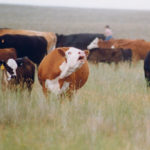Remote drug delivery systems such as dart guns are often used to administer sedation or tranquilizers to wildlife species that need to be restrained. Dart guns can also be used to administer tranquilizers to cattle that have escaped and can’t be restrained in holding facilities. It appears that some of the newer pneumatic dart gun […] Read more
Stories by John Campbell, DVM, DVSC
Attention to detail is important when planning lice control
The vast majority of beef cow-calf producers in Western Canada will use a pour-on endectocide product for parasite control, usually at some point in autumn. Most of those producers are mainly concerned about lice control. Using the pour-on product has become such a routine procedure that many of us don’t pay a lot of attention […] Read more
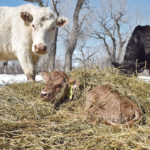
Benchmark data helps producers manage calf losses
Previously, I wrote about the economic importance of the calf-crop percentage. The calf-crop percentage is defined as the percentage of calves weaned per cow exposed to the bull. The calf-crop percentage is an easily measurable productivity trait and doesn’t require a lot of detailed records other than some inventory numbers at various times of year. […] Read more
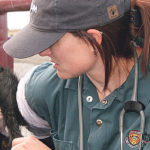
How does your herd measure up: Part 1: Non-Pregnancy Rates
One of the most important economic criteria that determines profitability is the calf crop percentage. This is defined as the percentage of cows weaned per cow exposed to the bull. Obviously, having a live calf to sell is the ultimate objective of most cow-calf enterprises and a failure to produce a calf can have a […] Read more
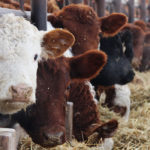
Pre-conditioning has major impact on calves’ immunity
Bovine respiratory disease has always been the most common cause of sickness and death loss in Canadian beef cattle and most of these losses occur shortly after weaning in calves that have been weaned, sold through an auction system and directly enter into the feedlot. Data from a National Animal Health Monitoring Study in 2011 […] Read more
Vets explore link between ureaplasma and infertility
I was recently involved in a disease investigation where the presenting complaint was infertility. This particular cow-calf herd had cows that were continuing to cycle despite several breeding attempts. It was a particularly well-managed herd with excellent nutritional management and a good vaccination program. As part of our investigation, we took vaginal swabs from some […] Read more

Drought brings additional livestock challenges
It appears substantial areas of the Prairies have potential to experience significant drought once again this summer. Years in which we have significantly less than normal rainfall can have major effects on pasture quality and forage ability. As well, the impacts on animal health can be significant and far ranging. First, we should have major […] Read more
Managing crypto disease challenging for producers
Cryptosporidium parvum, commonly known as “crypto,” is a microscopic parasite, (a single-celled protozoan organism) that can cause diarrhea in humans and animals. Cryptosporidium are very similar parasites to coccidiosis, but unlike coccidiosis, crypto is a zoonosis in that it can infect people and has caused some large outbreaks of human disease in Canada and the […] Read more
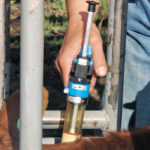
Vaccine use rises in western Canadian cow-calf herds
Recent measles outbreaks in North America and Europe have occurred as vaccination rates of children drop off due to anti-vaccination movements. I’m glad we don’t have a major anti-vaccination movement in the beef industry. In fact, we now have some evidence that the opposite trend is occurring. A recent study in the latest issue of […] Read more
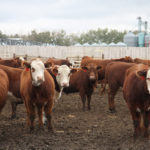
New research quantifying lameness in feedlot cattle
Lameness in cattle is an obvious animal welfare issue. Lame cattle appear to experience extreme pain, have difficulty moving to feed and water, and in some severe cases, may need to be humanely euthanized in a timely fashion. It has long been recognized as a significant economic issue as well. For example, in the dairy […] Read more

